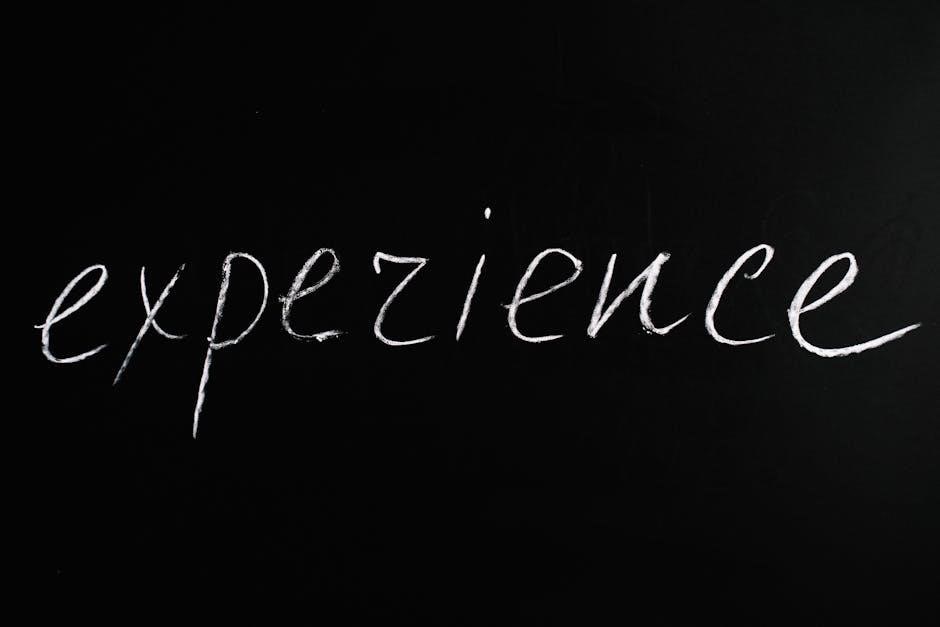American Sign Language Dictionary PDF: A Comprehensive Guide
Embark on a visual journey into American Sign Language (ASL) with our comprehensive guide! This resource illuminates the world of ASL dictionaries in PDF format‚ unlocking a wealth of knowledge for learners of all levels‚ from beginners to advanced signers.
American Sign Language‚ or ASL‚ is a visually rich language used by Deaf communities across the United States and Canada. It’s more than just a translation of English; it boasts its own grammar‚ syntax‚ and cultural nuances. ASL utilizes handshapes‚ facial expressions‚ and body movements to convey meaning‚ creating a dynamic and expressive form of communication.
Learning ASL opens doors to connect with a vibrant community and gain a deeper understanding of Deaf culture. It’s a language that promotes inclusivity and celebrates visual communication. For those embarking on this journey‚ a reliable ASL dictionary is an indispensable tool. Whether you’re a student‚ educator‚ or simply interested in learning a new language‚ ASL offers a rewarding and enriching experience.

The availability of ASL dictionaries‚ particularly in PDF format‚ makes learning more accessible than ever. These digital resources provide a convenient and portable way to look up signs‚ study vocabulary‚ and practice your signing skills. Embrace the world of ASL and discover the beauty and expressiveness of this unique language.
What is an ASL Dictionary and Why is it Important?
An ASL dictionary serves as a vital resource for anyone learning or using American Sign Language. Unlike a traditional English dictionary‚ an ASL dictionary primarily relies on visual representations‚ typically through illustrations or videos‚ to depict the correct handshapes‚ movements‚ and facial expressions associated with each sign. It’s a comprehensive guide that bridges the gap between spoken language and the visual language of ASL.
The importance of an ASL dictionary stems from the unique nature of the language. ASL is not simply a signed version of English; it possesses its own distinct grammatical structure and vocabulary. A dictionary helps learners grasp these nuances‚ ensuring accurate and effective communication. It provides a reference point for understanding the meaning of signs‚ learning new vocabulary‚ and solidifying one’s understanding of ASL grammar.
Moreover‚ an ASL dictionary fosters inclusivity and accessibility. By providing a clear and visual representation of signs‚ it empowers individuals to communicate with Deaf and hard-of-hearing individuals‚ promoting a more inclusive and understanding society. Whether you’re a student‚ interpreter‚ or simply interested in learning ASL‚ a reliable dictionary is an essential tool for your journey.
Types of ASL Dictionaries: Print vs. Digital
When exploring the world of ASL dictionaries‚ you’ll encounter two primary formats: print and digital. Each offers unique advantages and caters to different learning styles and preferences. Print dictionaries‚ the traditional option‚ provide a tangible resource with meticulously illustrated signs and detailed descriptions. They often include sections on ASL grammar and cultural insights‚ making them comprehensive learning tools. However‚ print dictionaries can be bulky and lack the dynamic element of video demonstrations;
Digital ASL dictionaries‚ particularly in PDF format‚ offer a more interactive and accessible experience. They often incorporate video clips of native signers performing the signs‚ allowing learners to observe the nuances of movement and expression. Digital dictionaries are easily searchable‚ making it quick to find specific signs. Furthermore‚ they can be accessed on various devices‚ providing convenient learning opportunities anytime‚ anywhere.
The choice between print and digital depends on individual needs. Print dictionaries offer a traditional learning experience‚ while digital dictionaries provide dynamic and accessible resources. Many learners find a combination of both formats to be the most effective approach‚ leveraging the strengths of each to enhance their ASL journey. Ultimately‚ the best ASL dictionary is the one that best suits your learning style and helps you achieve your communication goals.
Free Online ASL Dictionaries and Resources
The internet offers a wealth of free resources for learning American Sign Language‚ including numerous online ASL dictionaries. These digital dictionaries provide accessible platforms for exploring signs‚ often incorporating video demonstrations and interactive features. Websites like Lifeprint.com and Handspeak offer extensive sign libraries with detailed explanations of handshapes‚ movements‚ and facial expressions.
Many universities and organizations dedicated to ASL also provide free online dictionaries and learning materials. Gallaudet University‚ a leading institution for deaf education‚ offers resources that delve into ASL linguistics and culture. Other valuable resources include ASL University‚ which provides free self-study lessons and a comprehensive ASL dictionary. These platforms often include fingerspelling charts‚ grammar guides‚ and cultural insights to enhance your learning experience.
YouTube channels and other video platforms offer a plethora of free ASL lessons and sign demonstrations. These visual resources can be incredibly helpful for understanding the dynamic nature of ASL. Utilizing these free online dictionaries and resources can provide a solid foundation for your ASL journey‚ allowing you to build vocabulary and develop a deeper understanding of the language. Be sure to explore various resources to find the ones that best suit your learning style and goals.
Features to Look for in a Quality ASL Dictionary PDF
When selecting an ASL dictionary PDF‚ several key features can distinguish a valuable resource from a less effective one. High-quality video demonstrations are essential‚ allowing you to visualize the correct handshapes‚ movements‚ and facial expressions for each sign. Clear and concise written descriptions should accompany each video‚ explaining the nuances of the sign and its usage in different contexts.
Look for a dictionary that includes multiple examples of how each sign is used in sentences‚ providing practical application and improving comprehension. A comprehensive dictionary should also cover regional variations of signs‚ acknowledging the diversity within the ASL community. Inclusion of fingerspelling charts and explanations of ASL grammar are beneficial for beginners.
Furthermore‚ a well-designed ASL dictionary PDF should be easily navigable‚ with a clear index and search function. High-resolution images and videos are crucial for visual clarity. Consider dictionaries created by reputable organizations or linguists specializing in ASL. Reviews and recommendations from other ASL learners can provide valuable insights. Finally‚ ensure the dictionary is regularly updated to reflect current usage and new signs. Prioritizing these features will greatly enhance your learning experience and the effectiveness of the dictionary.
Popular ASL Dictionary PDFs: A Comparison
Navigating the world of ASL dictionary PDFs can be overwhelming‚ given the numerous options available. Let’s compare some popular choices. “The Gallaudet Dictionary of American Sign Language” stands out with its comprehensive illustrations and expert-led creation‚ boasting over 3‚000 signs and fingerspelling depictions. This is a very extensive work to dive into.
For beginners‚ “American Sign Language Dictionary for Beginners: A Visual Guide” offers an accessible entry point with 800 signs and clear visuals. “The American Sign Language Handshape Dictionary” is a unique reference‚ aiding users in locating signs based on handshapes‚ now revised with new signs and a DVD.

Free resources like Lifeprint.com provide a valuable ASL dictionary‚ lessons‚ and cultural insights. When comparing‚ consider the depth of content‚ clarity of visuals‚ ease of navigation‚ and user reviews. Some dictionaries focus on breadth‚ covering a wide range of signs‚ while others prioritize depth‚ offering detailed explanations and contextual examples. Evaluate your learning needs and choose a PDF that aligns with your goals and learning style. Remember to check for updates and accuracy before relying on any single resource. Comparing several options will ensure you find the perfect fit for your ASL journey.
The Gallaudet Dictionary of American Sign Language
Considered a cornerstone resource in the field‚ The Gallaudet Dictionary of American Sign Language is a comprehensive and authoritative guide to ASL. Created by an unparalleled board of experts led by renowned ASL linguist and poet Clayton Valli‚ this dictionary contains over 3‚000 illustrations‚ each meticulously crafted to ensure clarity and accuracy.
Each sign illustration incorporates a complete list of descriptive elements‚ including handshape‚ location‚ movement‚ and orientation‚ aiding learners in understanding the nuances of each sign. The dictionary also includes depictions of fingerspelling when appropriate‚ further enhancing its value as a learning tool.
This dictionary goes beyond a simple listing of signs; it delves into the linguistic and cultural aspects of ASL‚ providing insights into the grammar‚ history‚ and usage of the language. Its creation by Gallaudet University‚ a leading institution for deaf and hard-of-hearing individuals‚ lends it unparalleled credibility. For serious students of ASL‚ The Gallaudet Dictionary of American Sign Language is an indispensable resource‚ offering a deep and nuanced understanding of this vibrant language.
American Sign Language Dictionary for Beginners: A Visual Guide
For those just starting their ASL journey‚ an American Sign Language Dictionary for Beginners: A Visual Guide offers an accessible and engaging entry point. These dictionaries prioritize visual learning‚ utilizing clear illustrations and photographs to demonstrate each sign. The focus is on commonly used signs and basic vocabulary‚ making it easier for beginners to grasp fundamental concepts.
These guides often incorporate helpful features such as directional arrows to indicate movement‚ and annotations highlighting key aspects of each sign. The inclusion of cultural notes and basic grammar explanations provides context and enhances understanding. Many beginner’s dictionaries also focus on practical‚ everyday communication‚ enabling learners to start using ASL in real-world situations quickly.
A visual approach is particularly beneficial for beginners as it caters to the spatial and kinesthetic nature of sign language. By emphasizing visual representation and clear instructions‚ these dictionaries empower beginners to build a solid foundation in ASL‚ fostering confidence and encouraging continued learning. Look for dictionaries that include practice exercises and quizzes to reinforce learning and track progress. These features make the learning process more interactive and effective.
The American Sign Language Handshape Dictionary
Delving deeper into ASL lexicography‚ The American Sign Language Handshape Dictionary presents a unique approach to sign retrieval. Instead of organizing signs alphabetically by English gloss‚ this specialized dictionary categorizes them based on handshape. This method proves invaluable when you know the handshape of a sign but have forgotten its meaning or are encountering it for the first time.
This type of dictionary is particularly useful for intermediate and advanced learners. Recognizing and understanding the nuances of different handshapes is crucial for fluency in ASL. The handshape dictionary allows users to efficiently browse and identify signs based on this core element‚ offering a different perspective on ASL vocabulary.
Often‚ these dictionaries include detailed illustrations and descriptions of each handshape‚ along with variations and related signs. This allows for a more comprehensive understanding of ASL phonology and morphology. Furthermore‚ some editions incorporate multimedia components‚ such as videos‚ to demonstrate the correct execution of each sign. By focusing on handshapes‚ this dictionary provides a powerful tool for expanding vocabulary and refining signing skills‚ making it an essential resource for serious ASL students.
Using ASL Dictionaries for Self-Study and Education

ASL dictionaries‚ especially those in PDF format‚ are invaluable tools for both self-study and formal education. For self-learners‚ a PDF dictionary offers a convenient and portable resource to build vocabulary and understand the nuances of ASL grammar. The visual nature of these dictionaries‚ with their illustrations and descriptions‚ caters to the visual learning style often associated with sign language acquisition.
In educational settings‚ ASL dictionaries serve as essential references for students and instructors alike. They provide a standardized vocabulary and a consistent source of information for classroom activities and homework assignments. Teachers can use dictionary PDFs to create engaging lessons and quizzes‚ ensuring that students have a reliable resource to consult.
Moreover‚ ASL dictionaries facilitate independent learning and exploration. Students can use them to research specific signs‚ expand their knowledge of ASL culture‚ and practice their signing skills outside of the classroom. The availability of free online ASL dictionaries and resources further enhances accessibility‚ making ASL education more inclusive and affordable. Whether for personal enrichment or academic pursuit‚ ASL dictionaries are indispensable for anyone seeking to master this beautiful and expressive language.
Downloading and Accessing ASL Dictionary PDFs
Accessing ASL dictionary PDFs is generally straightforward‚ but understanding the process ensures a smooth learning experience. Many reputable websites and online libraries offer ASL dictionaries in PDF format‚ often available for free download. Ensure the source is credible to avoid inaccurate or incomplete information.
Before downloading‚ verify the file size and format compatibility with your device. Most devices‚ including computers‚ tablets‚ and smartphones‚ can readily open PDF files using pre-installed software or freely available PDF readers like Adobe Acrobat Reader.
Once downloaded‚ organize your ASL dictionary PDFs for easy access. Create a dedicated folder on your device or utilize cloud storage services like Google Drive or Dropbox for convenient access across multiple devices. Consider bookmarking frequently used sections or signs within the PDF for quick reference.
Be mindful of copyright restrictions when downloading and using ASL dictionary PDFs. While many resources are freely available‚ some may have limitations on distribution or modification. Respect the intellectual property rights of the creators and publishers to support the continued development of high-quality ASL learning materials. Always check the terms of use before downloading anything!
Beyond the Dictionary: Learning ASL Effectively
While an ASL dictionary PDF is a valuable tool‚ true ASL proficiency extends far beyond simply looking up signs. Effective ASL learning requires a multifaceted approach that incorporates active practice‚ immersion‚ and cultural understanding. Supplementing dictionary use with other resources is crucial for developing fluency.
Consider enrolling in ASL classes‚ either online or in-person‚ to gain structured instruction and personalized feedback from qualified instructors. Engage with the Deaf community through events‚ workshops‚ and social gatherings to immerse yourself in the language and culture. Practice signing with native signers to refine your skills and gain a deeper understanding of ASL nuances.
Utilize online resources such as video lessons‚ interactive exercises‚ and ASL forums to reinforce your learning. Watch ASL videos and movies to improve your comprehension and familiarize yourself with different signing styles. Remember that ASL is more than just a collection of signs; it’s a vibrant language with its own grammar‚ syntax‚ and cultural context. Embrace the journey of learning ASL and celebrate your progress along the way. Don’t be afraid to make mistakes; they are a natural part of the learning process.

The Future of ASL Dictionaries and Resources
The landscape of ASL dictionaries and resources is constantly evolving‚ driven by technological advancements and a growing awareness of the importance of accessibility and inclusivity. We can anticipate a future where ASL dictionaries are even more interactive‚ personalized‚ and readily available.
Imagine ASL dictionaries with augmented reality (AR) features‚ allowing users to overlay sign demonstrations onto real-world objects. Artificial intelligence (AI) could power personalized learning experiences‚ adapting to individual learning styles and providing customized feedback. Cloud-based platforms will enable seamless access to vast libraries of ASL resources from any device‚ fostering collaboration and knowledge sharing among learners and educators.
Furthermore‚ the future may bring more sophisticated sign recognition technology‚ enabling real-time translation between ASL and spoken languages. This would break down communication barriers and promote greater inclusion for the Deaf community. As technology advances‚ ASL dictionaries and resources will become even more powerful tools for language acquisition‚ cultural understanding‚ and communication accessibility. The continued collaboration between linguists‚ educators‚ and technologists will shape a future where ASL is more accessible and widely understood than ever before.
